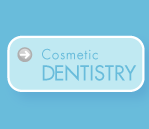

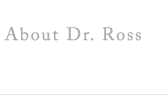
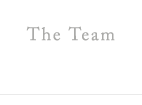
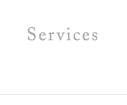
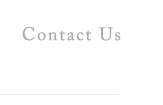
Return to Office Procedures
Reception and Waiting Area:
- Minimize contact at reception.
- Maintain physical distancing.
- Placed plexiglass screen for reception, reduced seating in the waiting room.
- Adequate room between one patient that is paying for services, and another waiting area to maintain physical distancing.
- Focus patient activity at the front desk to a minimum. Disinfect the area after patient departure with disinfectant wipes.
- Create a schedule to reduce overlap of patients.
- Consider limiting the number of patients that are in the waiting room at one time.
- Frequent sanitizing of personal desk space/ barriers (by employee)
- There is an area at the entrance of the clinic for patient screening/temperature taking/hand sanitizing and donning of mask. All people in the office to wear a mask.
- Patients asked to bring their own (non -medical okay) or one will be provided.
- Discourage staff sharing. Do not share pens, phone headsets, staplers, etc. These items will remain in each room.
- Furniture, magazines, tables, phone (toys, colouring, books) removed from the waiting area.
- Clean and disinfect. Clean surfaces with detergent or soap & water if visibly soiled, then proceed with disinfection. Disinfect touch surfaces frequently, including chairs, tables, door handles, light switches, bathrooms and fixtures, staffroom surfaces, lab areas, etc.
- Minimize the number of people at the office. Only child and infirm patients to be accompanied. (only by one person)
- Update contacts. Know how to contact the local health department. Call 811
- Posted signage – on entrance door, waiting room, and reception, regarding physical distancing, hand hygiene, and respiratory etiquette.
Emergent vs. Urgent vs. Elective Care
The terms “emergent”, “urgent” and “elective” are more typically used in the medical/physician setting, however, during a pandemic with communication from public health officials, these terms become commonplace in dentistry. The table below shows “equivalency” of terms between medical and dental providers.
“Medical” Term |
Dental Term |
|
Emergent, Emergency |
Medical emergency |
|
Urgent |
Dental emergency |
|
Elective |
Elective |
Before the Appointment:
- Determine the patient’s risk level for being infected with COVID-19 a few days before their appt and no later than twenty- four hours (except in cases of emergency appt) before their scheduled appointment over the phone, and upon arriving for the appointment. Patient forms will be emailed prior to their appointment to be filled out and returned by email. Or by telephone where required.
- Determine if the patient falls into one of the vulnerable population groups with respect to COVID-19.
- Explain the changed office protocols to the patient. In this new COVID-19 pandemic environment, patient screening cannot be emphasized enough.
Determining Patient Covid -19 Risk:
Typical screening questions to ask the patient before the appointment:
- Are you aware that you are COVID-19 positive or are you waiting for a test result?
- Do you have a fever or have felt hot or feverish anytime in the last two weeks (14 days)? Forehead thermometer available for testing.
- Do you have any of the following symptoms: Dry cough? Shortness of breath? Difficulty breathing? Sore throat? Runny nose? Post-nasal drip?
- Have you experienced a recent loss of smell or taste?
- Have you been in contact with any confirmed COVID-19 positive patients, or persons self-isolating because of a determined risk for COVID-19?
- Have you returned from travel outside of Canada in the last 14 days?
- Have you returned from travel within Canada from a location known affected with COVID-19?
- Is your workplace considered high risk? (e.g. routine close contact with many people)
- When screening results indicate a patient may be more likely to have COVID-19, defer appointments for 14 days or more if possible, treat with enhanced PPE or refer to appropriate facility for care.
*Some patients will be more vulnerable to developing severe Covid-19. The questions below help assess if a patient is more vulnerable:
- Are you over the age of 70?
- Do you have any of the following: serious respiratory disease, serious heart conditions, immunocompromised conditions, severe obesity, diabetes, chronic kidney disease or those undergoing dialysis, liver disease and pregnancy?
For more vulnerable patients, defer treatment whenever possible.
During the Appointment:
When patients arrive:
- Have patient disinfect hands with hand sanitizer at the patient receiving area at the front reception/waiting area.
- Consider providing patient with a mask if the risk of a COVID-19 infection is more than “low.”
- Complete patient arrival screening:
- Appointment Arrival Screening Questionnaire.
- Take patient’s temperature and record result.
- If patient screening indicates “moderate” or “higher” risk, isolate patient and consult with dentist on next steps.
- Have patient complete and sign Patient Acknowledgement of COVID-19 Risk Form
- Ask patient to respect physical distancing with all staff and patients.
- Limit patient time in the waiting room. Ideally, take the patient to the operatory immediately.
When the Patient is Seated in Operatory:
- Chair-side staff, wash hands or use alcohol based disinfectant and don mask before entering operatory. Encourage a face shield with aerosol generating procedures.
- All patients will use a pre-rinse before any dental procedures
- No hand-shaking or physical contact.
- Review overall health history, confirming that the screening questions were asked during the check-in procedure, and review if necessary.
- Remove mask only outside operatory.
- Limit movement out of operatory as much as possible.
- Clean operatory while wearing PPE.
- Wash hands after doffing PPE
- Ensure PPE is donned and doffed appropriately. Reference posters will be provided.
As the Patient is Leaving:
- Choose a touchless payment method, if possible.
- Have the patient wash or disinfect their hands before leaving the office.
Staff Preparation:
Before resuming work, staff must be oriented to workplace modifications and new office policies and protocols. They must also receive training on safe work procedures including the risks and symptoms of COVID-19, appropriate use of PPE, and safe handling of cleaning supplies.
There should also be a process in place, whereby staff can raise safety concerns and have them addressed. This point person could be the dentist, office manager or another employee assigned the role of worker health and safety rep. Dr. Stacie Ross or Kelly Long CDA.
Daily Staff Screening:
The health of the dental office staff is paramount and must be monitored for the continued health of the dental team. Daily staff screening focuses on this principle and includes a daily log confirming that they are not experiencing any symptoms of COVID-19. A daily log is in a binder at reception and must be reviewed and initialed each day by each employee.
The collection of screening data about employees constitutes a collect of personal information governed by the Personal Information Protection Act and attracts privacy obligations. It is therefore important to clearly explain to staff what information is being recorded in the log and how it will be used. Efforts should also be made to ensure that the logs and any other medical information collected about employees is protected against unauthorized access or use. Access to this information should be limited to those in the office with a need to know and should be kept secure at all times.
Hand Hygiene:
Strict staff hand hygiene is of paramount importance. Staff must wash or disinfect hands thoroughly:
- Upon entry into the dental office.
- Before and after any contact with patients.
- After contact with contaminated surfaces or equipment.
- In between procedures and after removing PPE depending on the procedure, following established PPE protocols.
Clothing and Office Environment:
In the highly infective COVID-19 environment, all dental office staff should consider wearing scrubs at work (Scrubs and shoes being supplied by Dr. Ross). Scrubs and shoes should be only worn in the office and should be put on when entering the office at the start of the day and removed at the office at the end of the day. In addition:
- Movement between the clinical area and the front office should be minimized.
- In the clinical areas:
- Keep surfaces clear of items as much as possible.
- Cover keyboards, computer mice, etc., with clear plastic barriers and change between patients.
- Minimize paperwork. Cover paper charts with clear barriers.
Clinical Areas:
- Sterilization room to be cleaned regularly with appropriate PPE.
- Dental units have been shocked and tested due to extended break in practice.
- Only patients and necessary attendants allowed in clinical areas.
- Operatories sanitized after each appt as per BCDA guidelines, including computers, radiograph machines.
Common Staff Areas:
- Encourage physical distancing.
- Disinfect touch surfaces often.
- Cleaning schedule in effect for front office personnel to sanitize waiting rooms/entrance and exit doors to the building. Other high touch areas. Including first floor public washrooms. **See copy of schedule at end of manual.
Receiving Deliveries:
Minimize transmission risk with procedures such as:
- Consider wearing gloves when collecting and/or accepting mail or packages.
- Screen delivery personnel. Daily Record Log of people entering the clinic to be kept. Name and phone # recorded or name of business.
- Consider sanitizing the exterior of boxes delivered.
- Consider sanitizing all surfaces that were touched by delivery items.
Clearing the Air (of Aerosols):
Research is ongoing with respect to transmission of COVID-19 through dentally generated aerosol and as information becomes available, it will be incorporated into this manual. If air can have contaminants in it following a dental procedure, how does it become safe again?
Aerosol contaminants are removed in the following ways:
- They settle out of the air and land on surfaces, including clothing.
- They are evacuated and either removed from the space completely, by air exchange.
The air changes per hour (ACH) in a space can be affected by many factors including the physical layout of the office, the ventilation systems, the height of the ceiling and the presence of windows that can be opened, etc. ACH in a dental office can be determined by HVAC/ventilation professionals and can be modified, if needed.
However, before making any changes to the dental office, which can be very expensive, refer to the guidance from the CDSBC on aerosol management. Avoid AGP when possible and reduce aerosols at source with high volume evacuation.
Splatter and Aerosols:
Dentistry is potentially challenged in infection control because so many procedures create splatter and aerosols. Splatter is made of larger particles and droplets that fall quite quickly. Aerosols are tiny droplets and particles that can float in the air for a long time. Eventually, these tiny droplets settle or are cleared from the air; the time settling or clearing depends on the ventilation of the office.
Splatter:
Controlling splatter, particularly splatter that includes saliva, is extremely important in preventing COVID-19 transmission. Credible scientific evidence shows that SARS-CoV-2 is very contagious with droplets. Uncontrolled splatter “gets everywhere” – on the patient’s face and clothes, on the dentist’s or hygienist’s face, hands, sleeves, clothing and on the floor. This splatter is easily transported, especially on clothing, to other areas of the office, including the washroom, the front desk, the break room, etc. This is one way the virus spreads and infects people. Evidence is beginning to show that heath care workers are becoming infected not in the procedure room, but outside of the procedure room. When outside the treatment areas, safety measures such as plexiglass barriers and/or PPE as specified in the CDSBC’s guidelines should be in place. During the COVID-19 pandemic, splatter must be minimized through the choice of procedures, and any splatter must be controlled with high volume evacuation (HVE) and careful handling of splattered PPE, clothing and surfaces. Absolute care is needed to ensure any splatter is not carried outside the procedure area. Splatter is the most common infectious risk in the dental office with an infectious virus.
-All Flooring will be cleaned /sanitized at the end of the day.
-Work shoe soles to be wiped/sanitized. Work shoes do not leave the clinic.
Aerosol Generating Procedures (AGPs):
Dental aerosols are generated with many procedures, as shown in Table 1. Aerosols that may contain SARS-Cov-2 from an infected patient occur when saliva is aerosolized along with products of the procedure. This occurs with aerosol procedures, from the use of an ultrasonic scaler, rotary handpiece, triplex syringe, or air abrasion unit, where the saliva cannot be prevented from entering the procedure area and becoming aerosolized. If these procedures are required, they must be performed with measures to mitigate the impact of aerosols.
For many procedures, potentially infectious aerosols may be minimized with the following steps:
- Have the patient rinse with Listerine * or 1% hydrogen peroxide (H2O2) for 60s.
- Apply a sealed rubber dam to isolate the procedure area, then swab exposed procedure area with H2O2 prior to beginning treatment
- Use of HVE
When the above steps are followed, and the treatment proceeds with use of high-speed instruments and other aerosolizing procedures, the aerosols created will only contain tooth debris and no infectious saliva, minimizing the risk of infectious aerosols. Using HVE will minimize risk of infectious aerosols and is expected to be suitable for patients in the low risk category for COVID-19. Research is currently underway to quantify the risks of this approach.
|
Device and/or procedure |
Contamination |
|
Ultrasonic and |
Considered the greatest source of aerosol contamination; use of a high-volume evacuator will reduce the airborne contamination by more than 95% |
|
Air Polishing |
Bacterial counts indicate that airborne contamination is nearly equal to that of ultra-sonic scalers; available suction devices will reduce airborne contamination by more than 95% |
|
Air-Water Syringe |
Bacterial counts indicate that airborne contamination is nearly equal to that of ultra-sonic scalers; high-volume evacuator will reduce airborne bacteria by nearly 99% |
|
Tooth Preparation with High Speed Handpiece |
Minimal airborne contamination if a rubber dam is used |
|
Tooth Preparation with |
Bacterial contamination is unknown; extensive contamination with abrasive particles has been shown |

